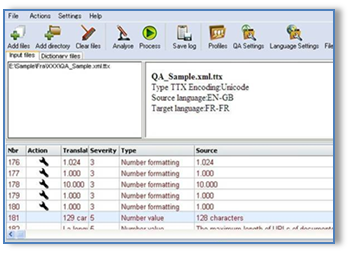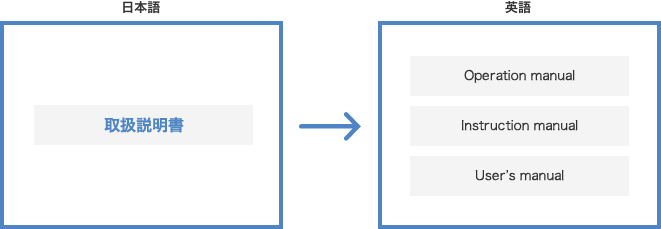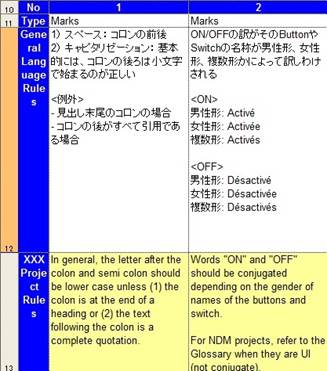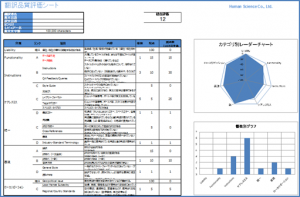Quality Control
- No technical terms are used
- "Mistranslation and omissions have occurred"
- "Terminology and expressions are inconsistent..."
Translating without rules can often lead to such problems.
Human Science Co., Ltd. is...
- "Training for Translators in Each Specialized Field"
- Utilizing Tools for Proofreading and Checking
- Glossary ・Style guide development
By thoroughly implementing and managing this, we alleviate your concerns regarding translation quality.
Management of Translators in Each Specialized Field
In fields such as IT, healthcare, automotive, semiconductors, and measuring instruments, there are industry-specific terms not only in Japanese but also in English and other languages.
If a translator from a different field simply "translates," it can be perceived as a translation done by an amateur, which may lead to trust issues arising from mistranslations.
At Human Science, we assign only translators who have been vetted for their specific fields to projects and continuously evaluate and educate them.

- Trial and Review
-
- 1. Review by native translators and translation directors for each specialized field
- (Fields: IT, Automotive, Semiconductors, Medical, Measuring Instruments, etc.)
- 2. Contract and register translators who meet the quality standards of human sciences (pass rate 20%)
- Translation Project in Progress
-
- Select translators that match based on field, work requirements, and quality requirements
- Translation Project Completed
-
- 1. Customer feedback on the reviewer's evaluation to the translator
- 2. Register and accumulate evaluations of quality and responsiveness in the translator database for projects
Utilizing Tools for Checks
To prevent mistranslations, omissions, and inconsistencies in terminology, we use Trados and our proprietary proofreading tools to conduct checks on translations of expressions and terminology.
We will reliably prevent errors that cannot be caught by the human eye.
In particular, when performing a large volume of translations in a short period, tools for proofreading and checking are effective in ensuring consistency in notation and terminology among translators.
At Human Science, we manage translation by utilizing tools with the help of in-house directors and checkers, as well as allowing translators to perform self-checks through project-specific configuration files.


Depending on the style guide and translation content, localization engineers will customize the necessary
check items in the configuration file for each project.
Checklist
Translation omissions, consistency of translations, garbled text, numbers, terminology, format checks, spell checks,
style checks, language rules
Example of Check Tool
Trados QA Checker, QA Distiller, Xbench, UI Checker (our proprietary tool)
Glossary ・Style guide development
Do you have a terminology and style guide in place?
In the case of translating large documents worked on by multiple translators, organizing a glossary and style guide contributes to the stability of quality.
Human Science proposes the development of glossaries and style guides through the following process for clients who do not have them.
- Before Translation Work
-
- 1. Review of the document to be translated
- 2. Identification of Terms and Styles to be Unified
- Translating
-
- 1. Distribute the target documents and glossaries/style guides to translators and reviewers.
- 2. Translation and review work based on the glossary and style guide
- After Delivery
-
- Update of Glossary and Style Guide
Benefits of Glossary Development
Especially when multiple translators are sharing the workload for a large number of manuals, inconsistencies in terminology are likely to occur.
By establishing consistent translations for product names, technical terms, and UI elements before starting the work, we prevent inconsistencies after translation.

Examples to Include in the Glossary
Benefits of Maintaining a Style Guide
A style guide is a list that defines the rules for expression, notation, and grammar.
You can avoid user confusion that often arises from different expressions even with the same meaning.

Examples to Include in the Style Guide
(quotations, apostrophes,
parentheses, etc.)
(Example) French Style Guide

In French, it is common to use a space (1 000) for thousands separators and a comma (3,5) for decimal points. However, since a comma (1,000) can also be used as a thousands separator, it is necessary to clearly establish the usage rules in advance.
In addition, it is common to use guillemets « » instead of English double quotation marks “ ”. However, since there are cases where the same double quotation marks as in English are used, it is necessary to clearly establish the usage rules in advance.
For those who want to know more about translation into English and other languages
- Reception hours: 9:30 AM to 5:00 PM JST
Tokyo: +81-3-5321-3111 Nagoya: +81-52-269-8016



